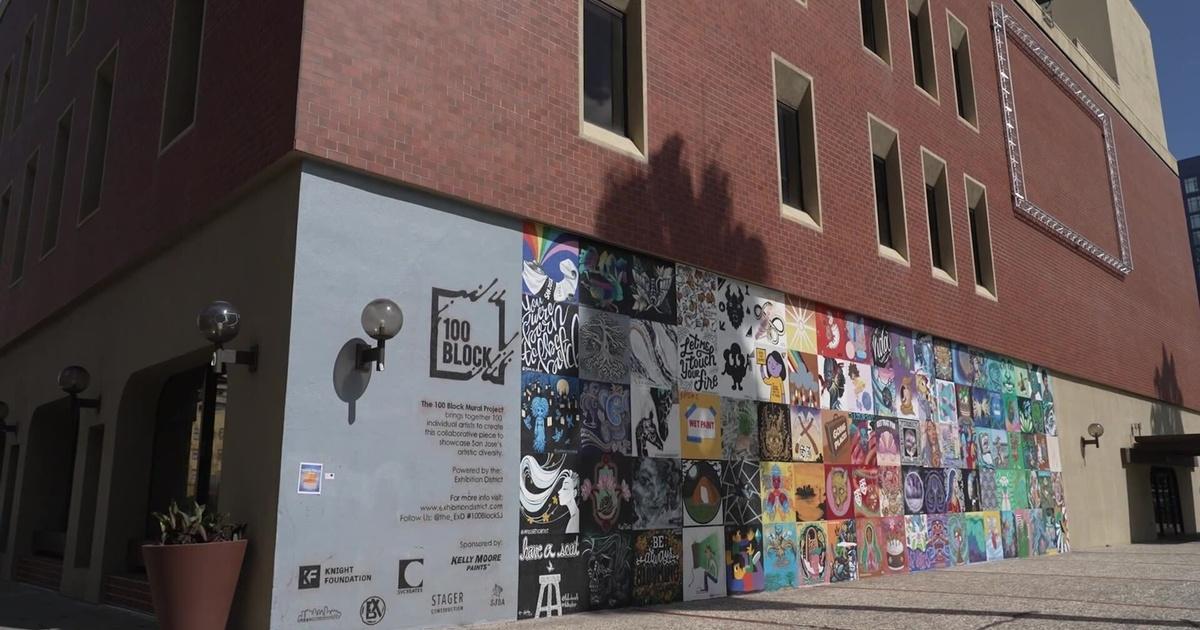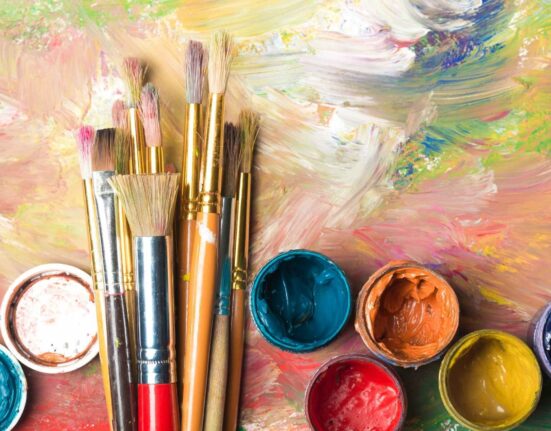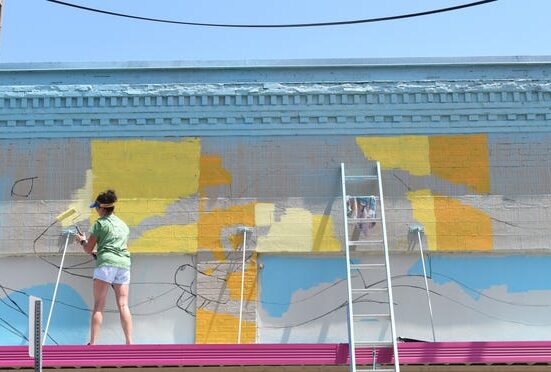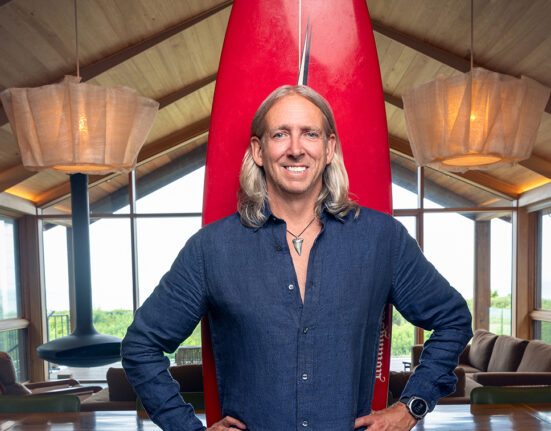AMNA NAWAZ: The city of San Jose in California’s Silicon Valley has made a pledge to go carbon-neutral by 2030.
To do this, leaders are enlisting help from an unlikely source, the arts sector, in a first-of-its-kind program in America.
Jeffrey Brown traveled to San Jose to see how artists could help a city meet its climate goals.
It’s part of our ongoing coverage on the intersection of art and climate change and our series Canvas.
JEFFREY BROWN: It was the sixth annual San Jose Day.
Among the stalls of vendors and local artists lining the streets were city officials hoping to get the word out on a pressing issue the city is now confronting head on.
OMAR TORRES, San Jose, California, Councilman: We are tackling climate change here in our city of San Jose.
JEFFREY BROWN: And on the mind of Omar Torres, District 3 councilman, a perhaps unexpected connection between climate change and art.
OMAR TORRES: Who would have thought, right?
JEFFREY BROWN: You wouldn’t have thought, climate policy and art?
OMAR TORRES: And it — but it’s an excellent idea and it’s an excellent partnership and it’s going to be a lasting movement.
JEFFREY BROWN: San Jose has set a goal to achieve citywide carbon neutrality six years from now, and it wants artists to help meet that deadline.
OMAR TORRES: I could tell you that when an artist posted on his social media or does a piece about climate change, I mean, it takes off.
And so we are creating a new generation of artists who care about climate change.
DANIELLE SIEMBIEDA, San Jose, California, Office of Economic Development and Cultural Affairs: Sustainability, environmental organization.
JEFFREY BROWN: The effort is led by Danielle Siembieda, an artist herself and senior arts manager for San Jose’s Office of Economic Development and Cultural Affairs.
She noticed a missing component in the city’s climate work, artists.
DANIELLE SIEMBIEDA: We’re a part of the economic sector.
We contribute $300 million a year to the economy.
So if we can look at that economic impact, and we can think about how we can reduce how much energy that we’re using, how much waste we’re producing, how much water that we’re using, then we will be part of that change.
We will create that shift.
JEFFREY BROWN: So she created the Climate Art Program, a three-part project that recruits artists and arts organizations in learning and demonstrating to others how to reduce their carbon footprint.
Artists like Rayos Magos are part of phase one, the Resilient Artist Cohort, a group of 15 artists who have learned and utilized ways they can reduce the carbon footprint in their work.
RAYOS MAGOS, Member, Resilient Artist Cohort: As an artist, I’m constantly working with materials, and so I think, for me, I’m always just aware of the amount of materials and usage and waste that I’m sort of consuming and the carbon footprint that I’m making.
It would just shine some more light on how we can lessen our carbon footprint and work together for a cleaner, green environment, especially here in San Jose.
JEFFREY BROWN: Magos and other artists will attend four workshops to measure their own carbon impact and learn techniques for reusing materials, sourcing products, and other green practices.
RAYOS MAGOS: We really want to take that information and share it, apply it maybe to the workshops they teach as well, that I can just sort of see the seeds that will be planted and the benefits of that and sort of sharing that information with others.
All that I’m seeing here, you had to redo?
You had to kind of remake the grounds?
JULIE SCOTT, Executive Director, Egyptian Museum: Yes.
Yes, it looked very different before we began our native plants project, and now just everything is so lush and the fragrance is so beautiful.
JEFFREY BROWN: This peaceful garden full of native plants is home to the Egyptian Museum in San Jose, created by the Rosicrucians, a philosophical order that dates back to 1614 and studies the laws of nature in order to live in harmony with them.
Julie Scott is the museum’s executive director.
JULIE SCOTT: It just really transformed everything, in addition to needing very little water.
JEFFREY BROWN: So, there — and, therefore, saving a lot of money?
JULIE SCOTT: And, therefore, saving a lot of money.
JEFFREY BROWN: Yes.
JULIE SCOTT: Yes, I count the $65,000 per year every year.
JEFFREY BROWN: Scott says the museum started down the carbon-neutral path beginning in 2017.
JULIE SCOTT: The Rosicrucian teachings encourage Rosicrucians to respect nature and to preserve it for future generations.
So we wanted to put our money where our mouth was.
We know the importance of sustainability.
So we looked at our energy use in what we could do for the environment here at Rosicrucian Park.
And we set our sights on achieving net zero carbon status.
JEFFREY BROWN: The museum replaced expensive grass with local plants, began using motion detector lights in the galleries, installed new windows, insulation, water tanks for the gardens, and then topped it all off with solar panels on the roof.
Amid rising utility costs, museum officials say they have already seen a return on investment, paying for the changes in less than half the estimated time, the next step, preparing a new space they hope to make LEED Platinum, the highest rating in green building.
The museum is one of some 20 buildings in the Carbon Neutral Creative Network, a group of San Jose arts organizations.
JULIE SCOTT: Climate Art Program in San Jose is new, and we were thrilled to be asked to participate in that, to show other museums and other arts groups how simple it can be.
We can’t put this off any longer.
This is urgent, not just for us, but for future generations.
JEFFREY BROWN: Later this summer, Danielle Siembieda and her team will share results from the Resilient Artist Cohort and the Creative Network in an online resource guidebook.
DANIELLE SIEMBIEDA: We want to show this as an example, not just for San Jose, but we want to be able to show this as an example for the whole country, for the state of California.
So we are leading in this because we think artists are already our organic community leaders.
And this is helping us achieve our goals by adopting those particular values that help us lead to the – – being carbon-neutral by 2030.
JEFFREY BROWN: For now, a city and its artists setting a path for future change.
For the PBS “News Hour,” I’m Jeffrey Brown in San Jose, California.







